 Hippogriff, 1891
Hippogriff, 1891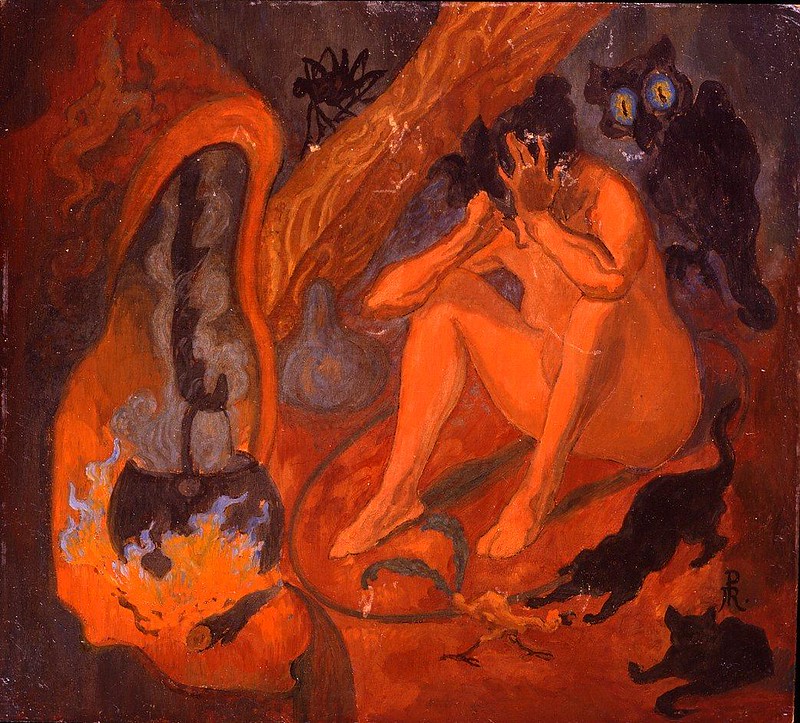 Witches in Saturnalia, 1891
Witches in Saturnalia, 1891 The Witch in Her Circle, 1892
The Witch in Her Circle, 1892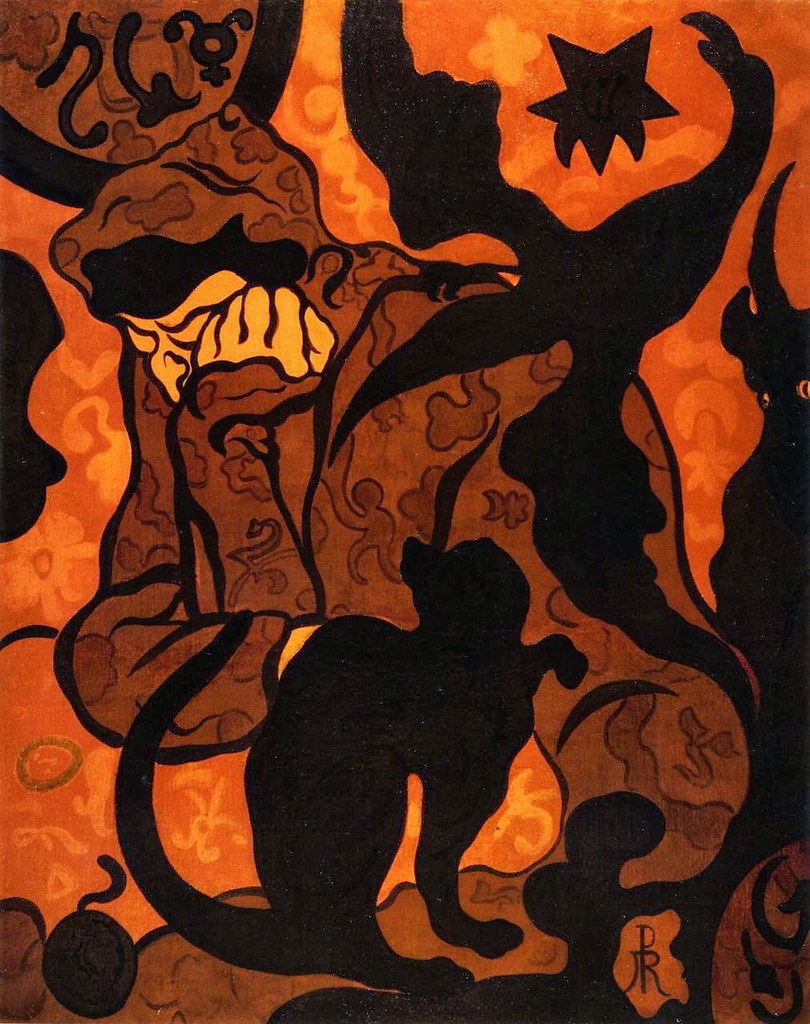 The Witch with Black Cat, 1893
The Witch with Black Cat, 1893 Witches around the Fire, 1891
Witches around the Fire, 1891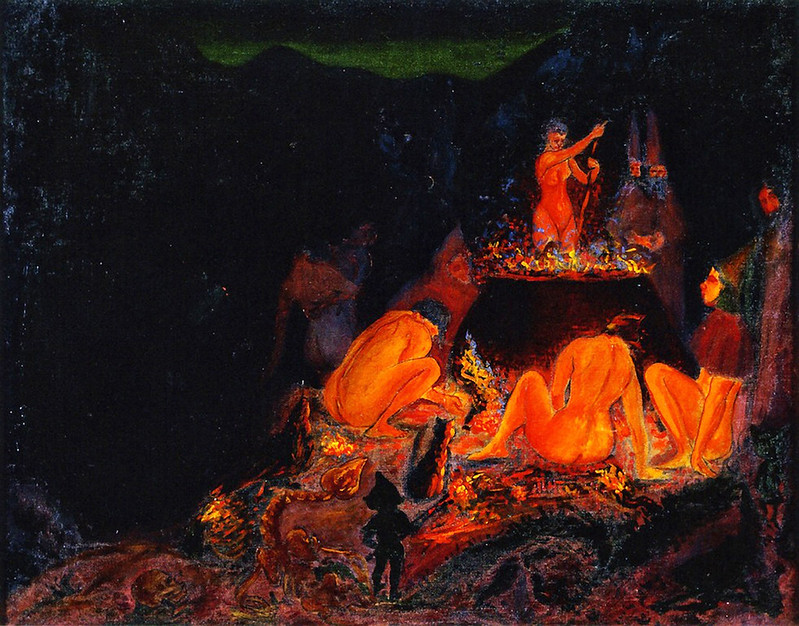 Witches in Saturnalia, 1891
Witches in Saturnalia, 1891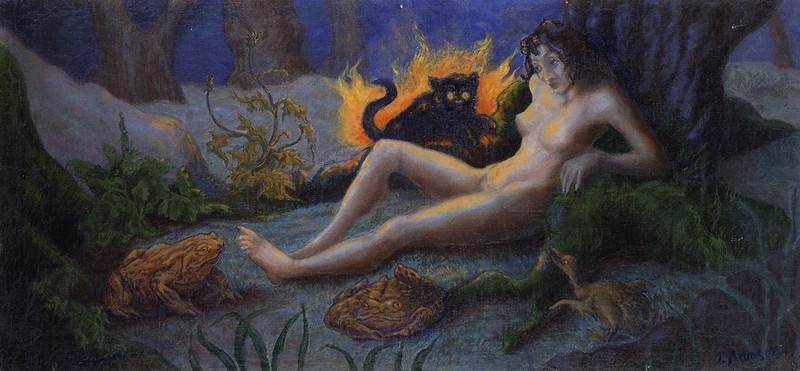 Witch with Cat, 1899
Witch with Cat, 1899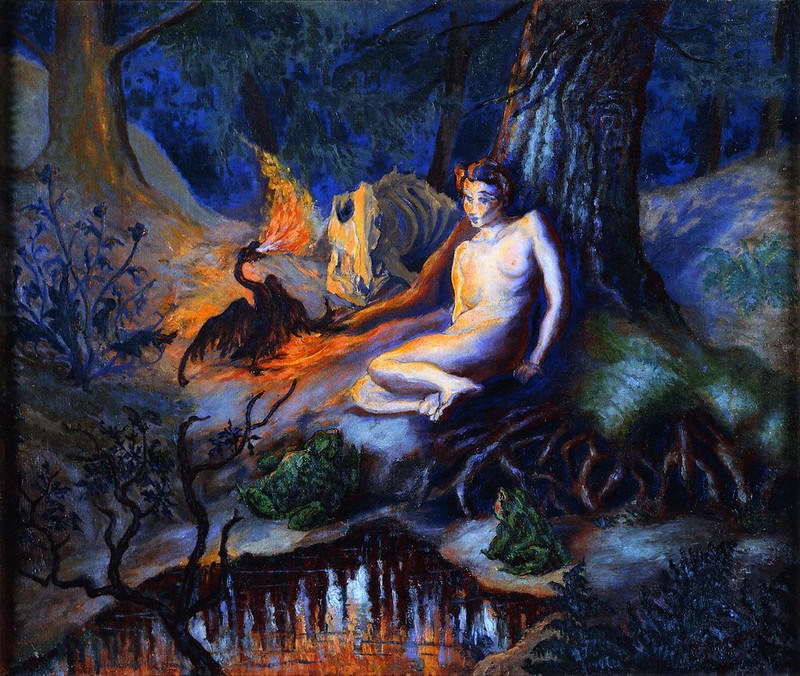 Nude with Carcass, 1899
Nude with Carcass, 1899 Fallen Stars, 1900
Fallen Stars, 1900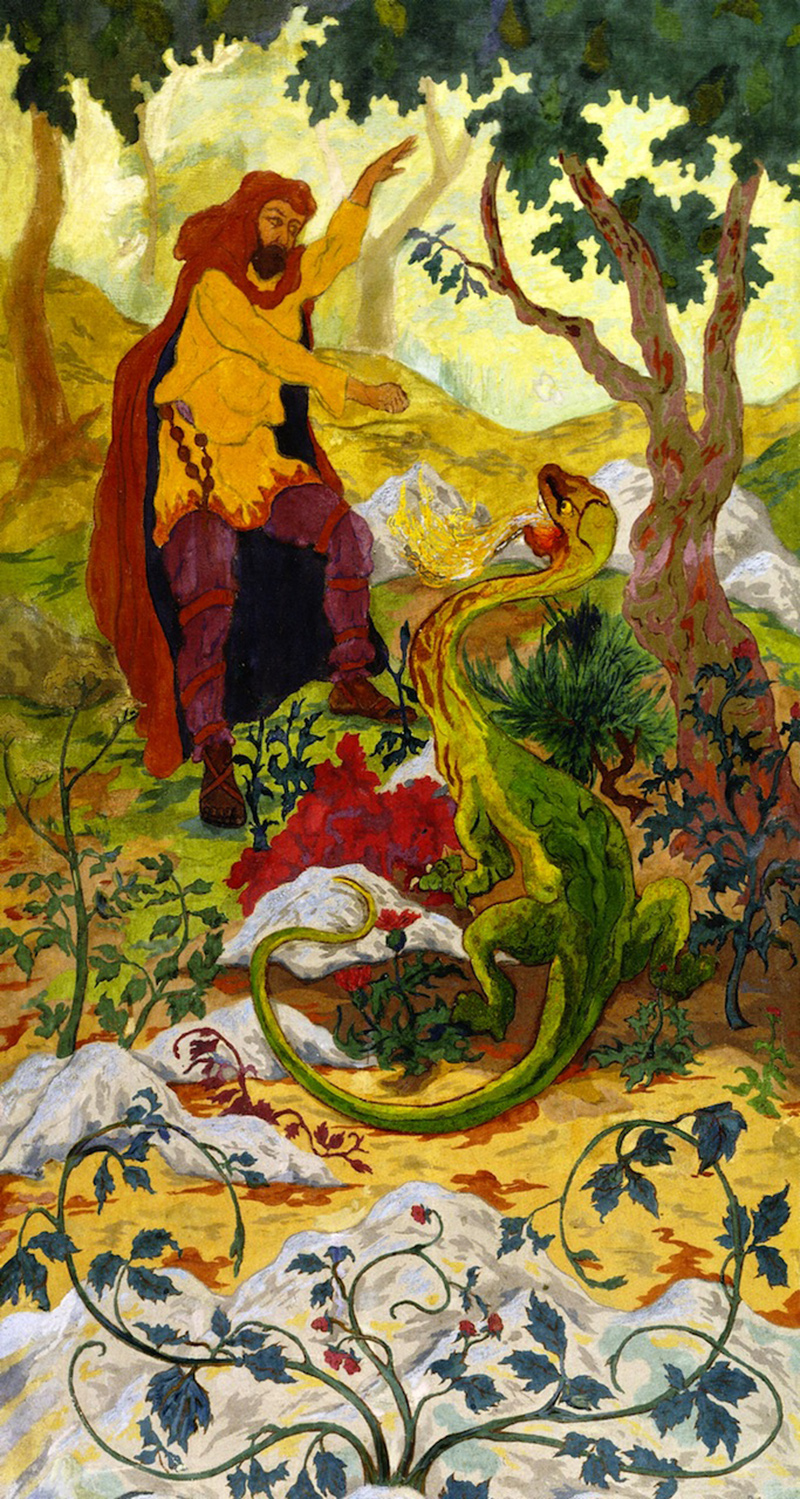 The Legend of the Hermit or The Temptation of Saint Anthony, 1899
The Legend of the Hermit or The Temptation of Saint Anthony, 1899"The son of a successful local politician, Ranson was encouraged from the outset in his artistic ambitions. He studied at the Ecoles des Arts Décoratifs in Limoges and Paris but transferred in 1886 to the Académie Julian. There he met Paul Sérusier and in 1888 became one of the original members of the group known as the Nabis.
From 1890 onwards, Ranson and his wife France hosted Saturday afternoon meetings of the Nabis in their apartment in the Boulevard du Montparnasse, jokingly referred to as ‘Le Temple’. Ranson acted as linchpin for the sometimes dispersed group. Noted for his enthusiasm and wit and for his keen interests in philosophy, theosophy and theatre, he brought an element of esoteric ritual to their activities. For example he introduced the secret Nabi language and the nicknames used familiarly within the group. He also constructed a puppet theatre in his studio for which he wrote plays that were performed by the Nabis before a discerning public of writers and politicians.
Ranson’s work showed a consistent commitment to the decorative arts: like Maillol he made designs for tapestry, some of which were executed by his wife. His linear, sinuous style, seen in works such as Woman Standing beside a Balustrade with a Poodle (Altschul priv. col., see Post-Impressionism, exh. cat., London, RA, 1979, p. 119), had strong affinities with Japanese prints and with contemporary developments in Art Nouveau design; it was a style suited to a variety of media, stained glass, lithography, ceramics or tapestry.
Ranson tended to favour exotic, symbolic or quasi-religious motifs rather than subjects observed from nature. In his Nabi Landscape of 1890 (Lausanne, Josefowitz priv. col., see P. Jullian, The Symbolists, London, 1973, no. 174), for example, he sets a variety of obscure feminine symbols within a fantasy landscape. After his early death in 1909 his wife continued to run the Académie Ranson, which they had opened in 1908 to disseminate Nabi aesthetic ideas and techniques to a younger generation. Teaching was undertaken on a voluntary basis by other Nabis, especially Denis and Sérusier." - quote source
Artworks found at The Athenaeum.

No comments:
Post a Comment